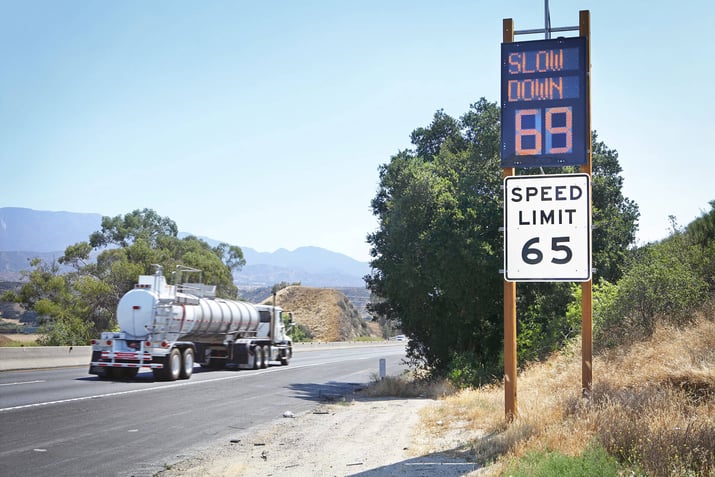Fostering Effective Speed Management

Properly managing the truck’s speed requires skill and good judgment. Failure to do so could have tragic consequences. To help avoid this, drivers must recognize the hazards that can lead to a crash, know the defense, and react properly. Read the information below and ask yourself how you can improve your driving style in any of the hazard categories.
RECOGNIZE THE HAZARDS

ENVIRONMENT
Adverse weather and road conditions are two reasons to slow down. Slippery conditions reduce traction, and poor visibility affects perception time. Both factors may lead to a critical crash.

EQUIPMENT
Speeding and traveling faster than the flow of traffic can lead to increased brake usage and tire degradation. These factors affect stopping distance and increase the risk of a critical crash.

PERSONAL BEHAVIORS
Speeding decreases a driver’s perception and reaction time to hazards. Driving too fast for conditions, even if under the posted speed limit, may cause load shifts, rollovers, and other loss of control crashes.
KNOW THE DEFENSE

observe proper speed for conditions
In adverse conditions, reduce speed 2-3 mph below the flow of traffic, not to exceed the posted speed limit. On ramps, curves, and turns, reduce speed 5-10 mph below the posted speed limit since it is intended for passenger vehicles.

react properly to hazards
Each hazard is unique; increase your perception and reaction time by slowing down to create greater stopping distance. On ramps, curves, and turns, slowing down before entering the curve can help prevent cargo shifts and rollovers by decreasing centrifugal force, which pushes the truck outward.

maintain proper following distance
Keep a minimum of six seconds behind the vehicle in front of you. Add more space if additional hazards, such as traffic congestion, construction zones, rain, fog, etc., are present.

be attentive to the road ahead
Watch for slowing or stopped traffic ahead. Slow down and increase following distance to allow more time to stop.

vehicle inspections
Brakes and tires wear down faster due to speeding and are commonly cited in roadside inspections. Conduct a thorough pre-trip inspection to ensure the truck meets requirements and is safe to operate.
Note: These lists are not intended to be all-inclusive.
The information in this article is provided as a courtesy of Great West Casualty Company and is part of the Value-Driven® Company program. Value-Driven Company was created to help educate and inform insureds so they can make better decisions, build a culture that values safety, and manage risk more effectively. To see what additional resources Great West Casualty Company can provide for its insureds, please contact your safety representative, or click below to find an agent.
© Great West Casualty Company 2020. The material in this publication is the property of Great West Casualty Company unless otherwise noted and may not be reproduced without its written consent by any person other than a current insured of Great West Casualty Company for business purposes. Insured should attribute use as follows: “© Great West Casualty Company 2020. Used with permission by Great West Casualty Company.”
This material is intended to be a broad overview of the subject matter and is provided for informational purposes only. Great West Casualty Company does not provide legal advice to its insureds, nor does it advise insureds on employment-related issues. Therefore, the subject matter is not intended to serve as legal or employment advice for any issue(s) that may arise in the operations of its insureds. Legal advice should always be sought from the insured’s legal counsel. Great West Casualty Company shall have neither liability nor responsibility to any person or entity with respect to any loss, action, or inaction alleged to be caused directly or indirectly as a result of the information contained herein.




